When our son was 2, he decided that napping wasn’t all it was cracked up to be and decided to go on a 2-year-old nap strike.
We knew he would be miserable without his afternoon nap but weren’t sure how to handle it. Thankfully, after doing some research, we discovered that it wasn’t necessarily permanent.
Although, eventually he stopped napping completely, around age 3. But that’s another sad story. Ahhh yes, I do miss naptime…
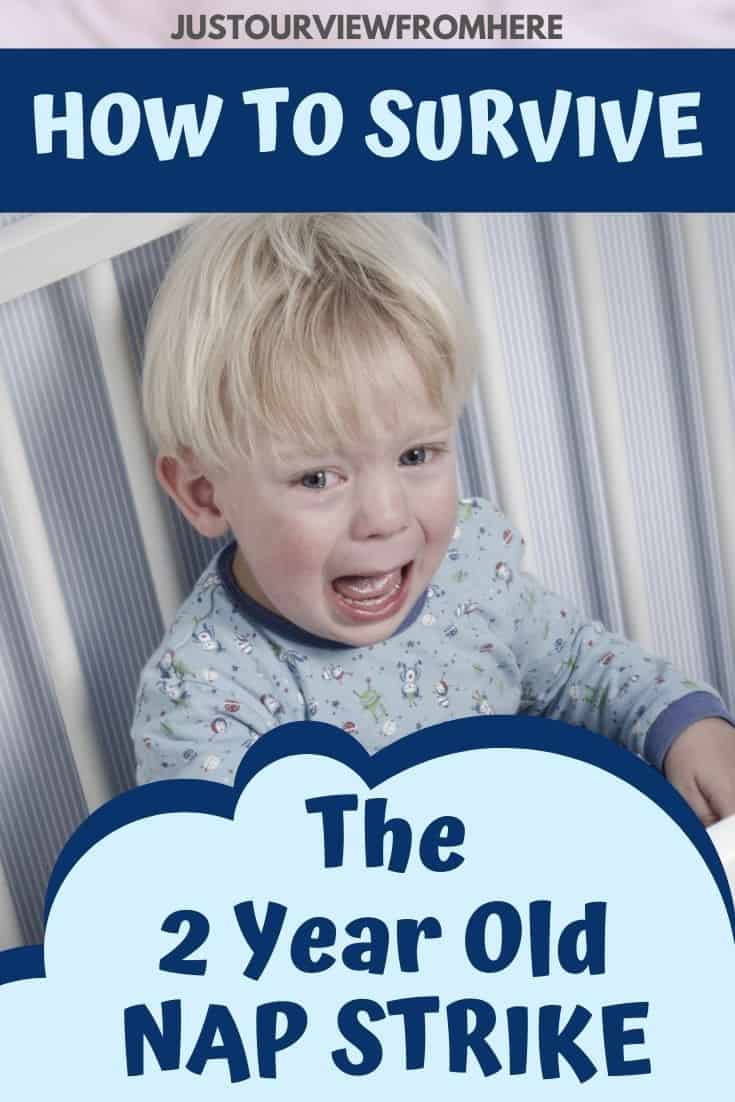
Some of my blog posts may contain affiliate links, from which I may receive a small commission at no additional cost to you. More info on that in our disclosure and privacy policy.
What Should I Do If My 2-Year-Old Goes On A Nap Strike?
A nap strike is when a toddler starts fighting their age-appropriate naps.
The first thing to try is to keep to your normal routine and put your toddler down at their regularly scheduled naptime for 30 minutes.
It is quite typical behaviour for toddlers around age 2 to start resisting naps, but here’s the good news. It isn’t always permanent! Skipping naps is very common at this age.
What’s Inside
- Be consistent, stick with your regular routine as best you can
- Try calling it quiet time or downtime instead
- Remove all stimulation (noisy toys, background TV, etc.)
- White noise machine
- Read a story holding or gently rocking him or her on your lap
- Lay with them and quietly tell a story
- Take a drive
- Move up bedtime
- Keep a regular morning waketime
- Be patient!
Be Consistent
If your 2-year-old goes on a nap strike, do the very best you can to stick to your regularly scheduled naptime. I know, life gets in the way sometimes and that can’t be helped but for the most part, stay consistent.
Kids really do thrive on routine, especially at this age.
If they don’t fall asleep in 30 -45 minutes, just get them up and try again the next day. You can tweak it a little bit if you notice them rubbing their eyes, yawning, or showing other signs of tiredness, just don’t stray too far off from normal nap time.
Change Nap Time To Quiet Time
Don’t call it ‘naptime’ anymore. This one worked really well for us.
Just tell your child that it’s time for quiet time or ‘down time’ and that they don’t necessarily have to fall asleep. We used to tell our son that it was time to recharge our batteries.
Giving them that sense of control over the situation really appeals to their desire for independence. I really recommend this tactic especially if you have a strong-willed child as we do.
Remove Stimulation
Keep any noisy toys and electronic gadgets far away from the quiet zone. Let them know they can quietly play with a puzzle, or their dolls, or read a book.
Also, keep the house noise to a minimum, depending on the size of your house. Our home is quite tiny so I never even turned the TV or radio on during quiet time.
Try A White Noise Machine
Not all noise is created equal though. A white noise machine can have a relaxing effect on your little one and is a great thing to have in general, not just during a nap strike.
I loved the white noise machine we used. It had a ton of different choices of sounds and lullabies, along with a nightlight.
Sometimes I would play it on the musical setting while reading our son a story and then if he drifted off I would switch it to the white noise setting.
I found it helpful to block out any unexpected noises from the outside world (you know…honking cars or traffic, loud neighbours, Amazon deliverymen, and things like that).
Rock And Read A Story
When your 2-year-old goes on a nap strike, you may have to take a hands-on approach and be in the room with them.
Take the time to plop down on the rocking chair or glider and snuggle them up on your lap to read a book.
Perhaps give them a bottle or a feed, and read a quiet story in a calm, soothing tone.
We definitely used this technique (and the one below) as my son wouldn’t stay in his room. He always had FOMOS (fear of missing out syndrome), even as an infant.
Additionally, reading with your little one is one of the best bonding experiences you can have.
Great Read-Aloud Books For 2-3 Year Olds
Reading With Preschoolers-Tips For Parents
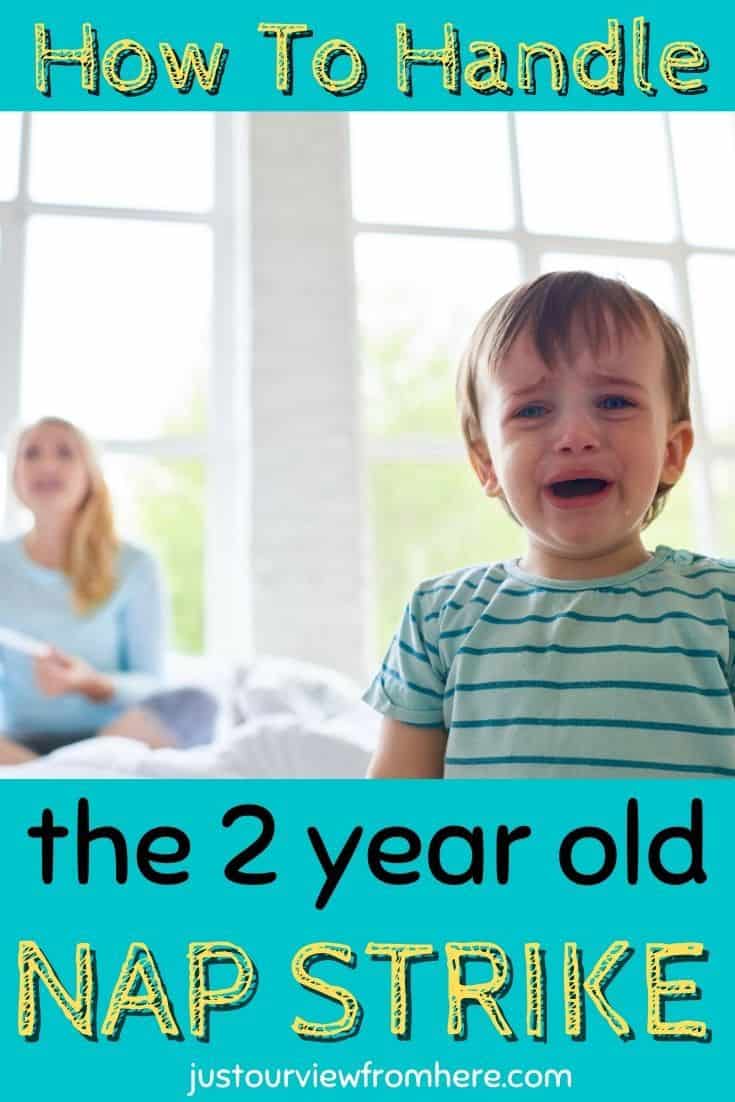
Lay With Your Child Quietly
If your child has already transitioned from their crib to a big kid bed, (and if the bed is big enough) you might even lay down with them to read or tell them a story.
Of course, as with everything toddler and kid-related, this will depend on how much of a snuggler your kid is.
I would tell my son that I was tired and just needed someone to lay down with me for a little while and read. Even if he wouldn’t nap, he would always lay down and listen to a story. It was a great way for me to recharge my own battery.
Sometimes he fell asleep, sometimes he didn’t. Other times we both had a snooze! But at any rate, we gave our bodies the chance to rest.
From Crib To Bed: How To Easily Transition Your Toddler
Take A Drive
This one might not be for everyone but it’s worth mentioning.
I did do this from time to time, as I have one of those kids that would sometimes (but not exclusively) fall asleep in the car seat.
If you know your toddler loves it and it is calming for him or her, grab a cuppa to go and take a nice relaxing drive, preferably somewhere scenic.
Play some nice mellow music or put on a quiet DVD.
Even if they don’t nap, it will still provide an opportunity for their busy little body to rest and recharge.
Move Up Bedtime
On the days that the nap just doesn’t happen, move up bedtime slightly.
Expect to have a little (or a lot) of cranky/overtired behaviour during the late afternoon or the “witching hour”. Start your regular bedtime routine a half hour to an hour earlier, but no more than that.
Keep A Regular Morning Wake Up Time (Even During A Nap Strike)
Again, it’s key to remember that kids thrive on routine.
So even if it is tempting to let your 2-year-old sleep in to “catch up” on missed sleep from the previous day that did not include a nap, resist the urge.
I mean a few minutes here and there is fine, if you need one more coffee or ten minutes more of ‘me time’ in the a.m. that’s perfectly cool. Just don’t let them sleep until noon.
Be Patient
Be as patient and calm as you can with your toddler as you navigate these naptime battles.
Kids will always pick up on your vibe so if you feel like you’re gonna snap, take a breath and walk away.
Be firm in your statements but use a gentle approach. For example, if you choose to do the ‘quiet time’, say in a calm but firm voice, “You may play with your dolls/puzzles or read quietly so your body can rest until it’s time to get up”.
There may be days when your toddler wants to turn it into a raging battle but don’t take the bait. Stay calm and carry on and act as if it’s no big deal.
Don’t force it, simply remind them matter-of-factly that if they don’t nap or rest, they will probably be tired later on and they will need to go to bed earlier.
This will introduce the concept of consequences to them.
And of course, remember, this too shall pass.
Why Is My Toddler Fighting Naps?
Sometimes a nap strike is triggered by hitting a developmental milestone like talking. It is a new skill and they want to practice as much as they can. Like “No time to nap Mom! I am busy practicing all these new words!”
In this way, it’s quite similar to when they reach some earlier milestones like crawling and pulling themselves up to standing in their crib.
Potty training or teething can also be factors. Even a runny nose caused by the common cold could be another reason.
And of course, their ever-expanding desire for independence.
Toddlers this age are discovering their autonomy and pushing limits is to be expected.
It is natural at this age to put parents to the test with the “my way or the highway” attitude, you know terrible twos and all that.
you may also like:
Terrible Twos and Other Stages of Kidhood
Oh Crap Potty Training Method: Our Experience
How Much Sleep Does A 2-year-Old Need?
It is recommended that toddlers around age 2 get between 11 and 14 hours of total sleep every day. By age 2, it is very common for toddlers to only take an afternoon nap.
The most important thing to keep in mind is the total hours of sleep they get in a 24-hour period.
With our son, he was sleeping a solid 11-12 hours a night so his nap strike was not too worrisome.
In our case, by the time he was 3, he had dropped the nap completely, although we still carried on with our ‘recharge the battery time’ after that.
Sometimes we would read quietly together, or put on a mellow movie and lay on the couch to watch it.
How Important Is Sleep To A Toddler’s Development?
Sleep is absolutely essential for toddlers. It directly impacts their mental and physical development, their mood (ie. they are way less cranky!), and attentiveness.
Did you ever wake your kid up in the morning with a hole blown out of their footie pajamas and think…You Grew Overnight!!
It’s true, you’re not crazy. Most of your toddler’s growth happens while they are sleeping.
A well-rested toddler has improved concentration as well which is so important for them as they work on all their new skills!
As an added bonus, a child who is well-rested will have a strong natural immune system. And you can’t beat that.
How Do I Know When My Toddler Is Ready To Drop The Nap?
Watch for your child’s cues and trust your instincts as well when it comes to knowing when naptime is done for good.
According to Motherly.com, there are 5 sure-fire ways to determine if your toddler is ready to stop napping.
- They are able to make it through the day with minimal behavior changes or melt-downs
- Night-time sleep increases
- They don’t actually fall asleep during a nap attempt (after trying consistently for a week or so)
- They are in an all-day school program that doesn’t schedule nap-time
- Keeps up energy throughout the day (Source Motherly.com, accessed Mar 29/21)
25 Calm Nap Activities For Non-Nappers (Transitioning to Quiet Time Around Age 3)
7 Positive Parenting Tips To Become A Calmer Parent (No Yelling!)
Wrap Up
Here’s hoping you find some of these tips useful in your quest to understand and survive the 2-year-old nap strike.
Remember, it is yet another stage of toddlerhood, and you will survive it.
Every kid is different and what works for one may not work for another. You definitely know your child best!
If I can leave you with one thing that always helped me when I felt a little anxious or overwhelmed dealing with my 2 year old it is this…
Remember, it won’t be this way forever, as in…they won’t always be this little so soak up the good stuff.
As a mom, I know it can be hard and frustrating at times but when you land on one of those sweet moments (like reading and snuggling at quiet time), stick them in your memory bank like a treasure.
Your future self will be happy that you did.
Soon enough, they’ll be off to college and you can bet your butt, you will reminisce about those afternoon cuddles.
Until next time, K.

Kelly Blakely is the founder and creative force behind Just Our View From Here. As a first-time mom over 40, she brings a fresh perspective to parenting and family life on her blog. Kelly also explores a wide range of lifestyle topics in her writing, including fashion, beauty, self-care, and well-being.
You may also like:
Benefits Of Taking Your Kids To The Library
11 Compelling Reasons to Bring Your Kids to the Library A Library is a magical…
The Best Educational Toddler Shows on Netflix
Streaming Smarts: Unleash the Power of Netflix for Your Little Learners! Hello, super moms and…
Easy Fall Arts And Crafts Ideas For Kids
Simple Autumn Arts And Crafts For September & October It’s fall y’all! It’s the perfect…
Positive Parenting Top Tips For Parents
How To Be A Better Parent ( Without Yelling) As a mom myself, I know…
Reading With Preschoolers-Tips For Parents
Are You Wondering How To Raise A Reader? When it comes to kids and reading,…
Space Books For Toddlers And Preschoolers To Blast Off Learning!
30 Preschool Books About Space And Astronomy Updated Feb. 9, 2023 Toddlers and preschoolers who…
Just Our View From Here is a participant in the Amazon Services LLC Associates Program, an affiliate advertising program designed to provide a means for sites to earn advertising fees by advertising and linking to Amazon.com.

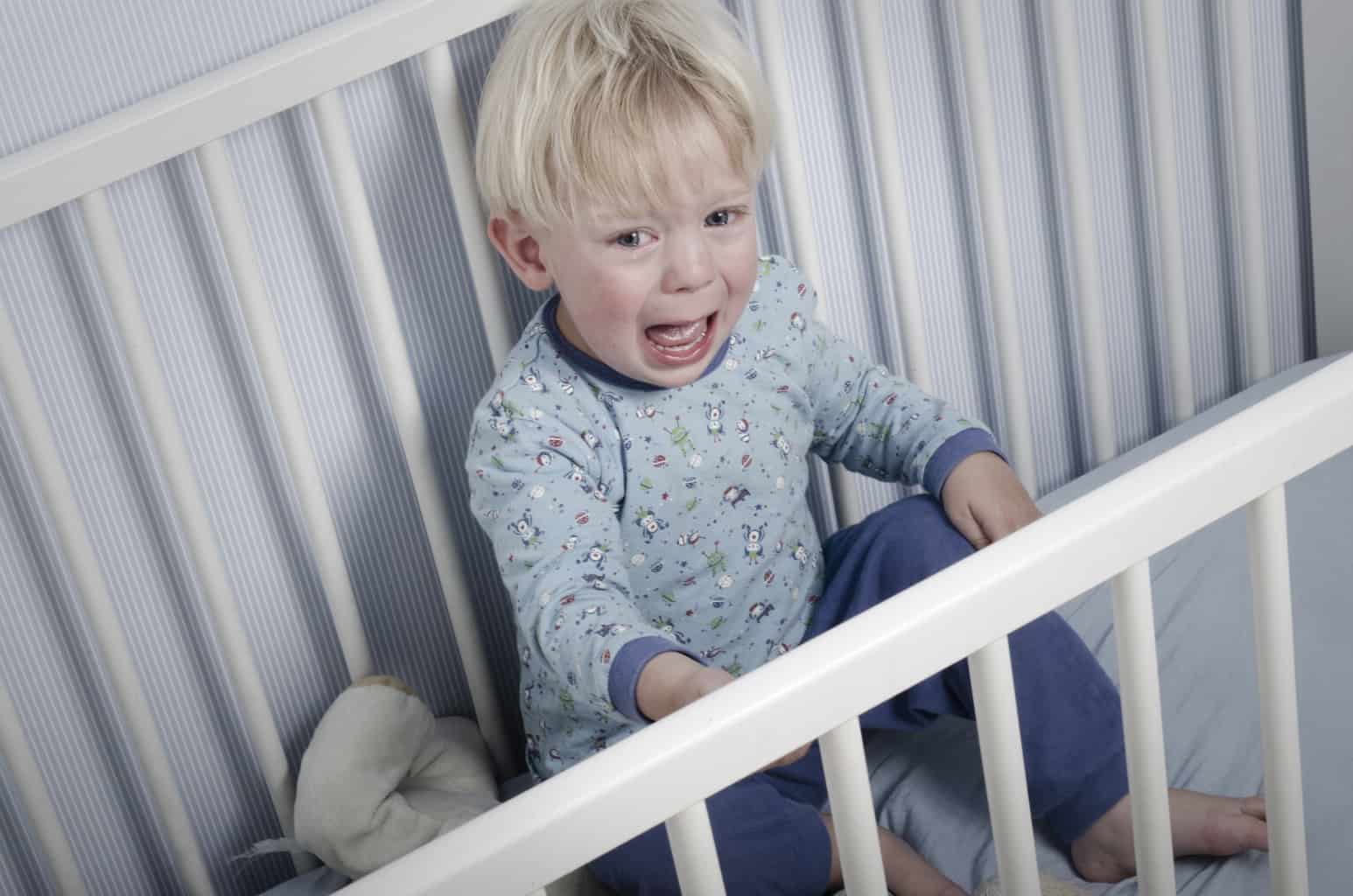

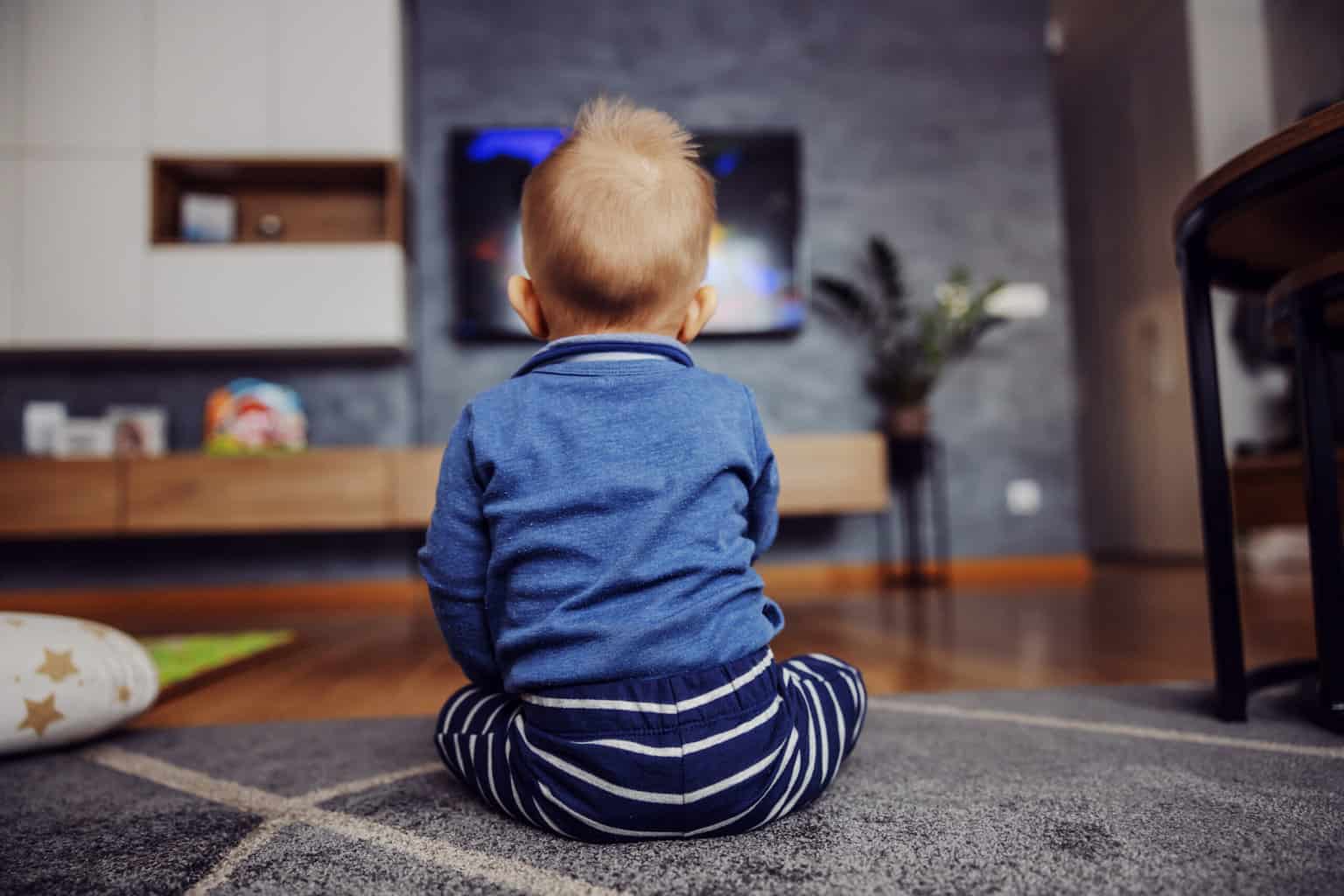

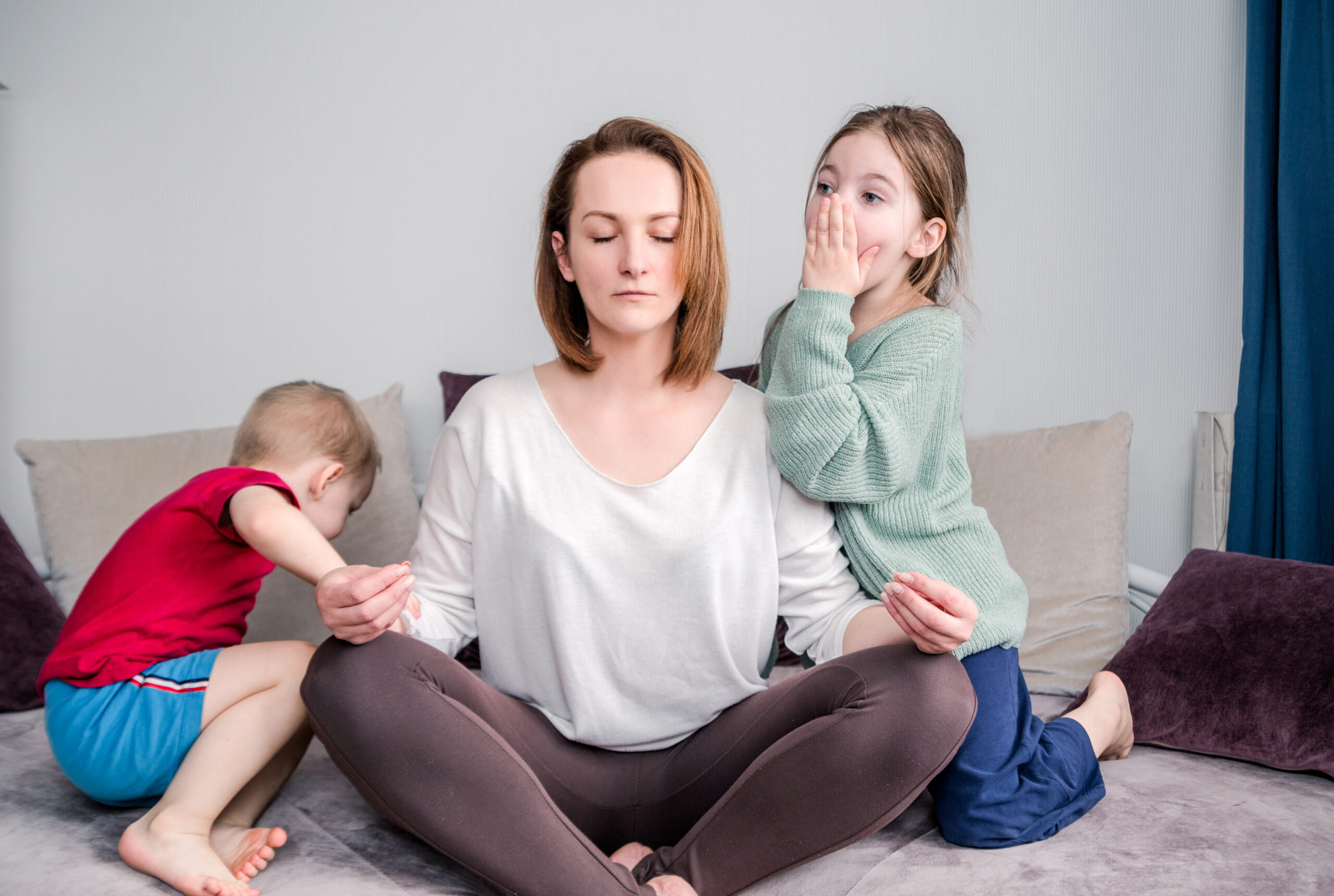


You say white noise still works? I remember quitting it months back. Interesting! Good to know. I can recommend Susan Urban’s book on toddler’s sleep. It helped us a world!
Well, of course, every child is different but we found it really did help. As I said, living in a small home, it was quite useful for blocking out noise from the TV or conversations. Plus my toddler had FOMO (fear of missing out) 😉